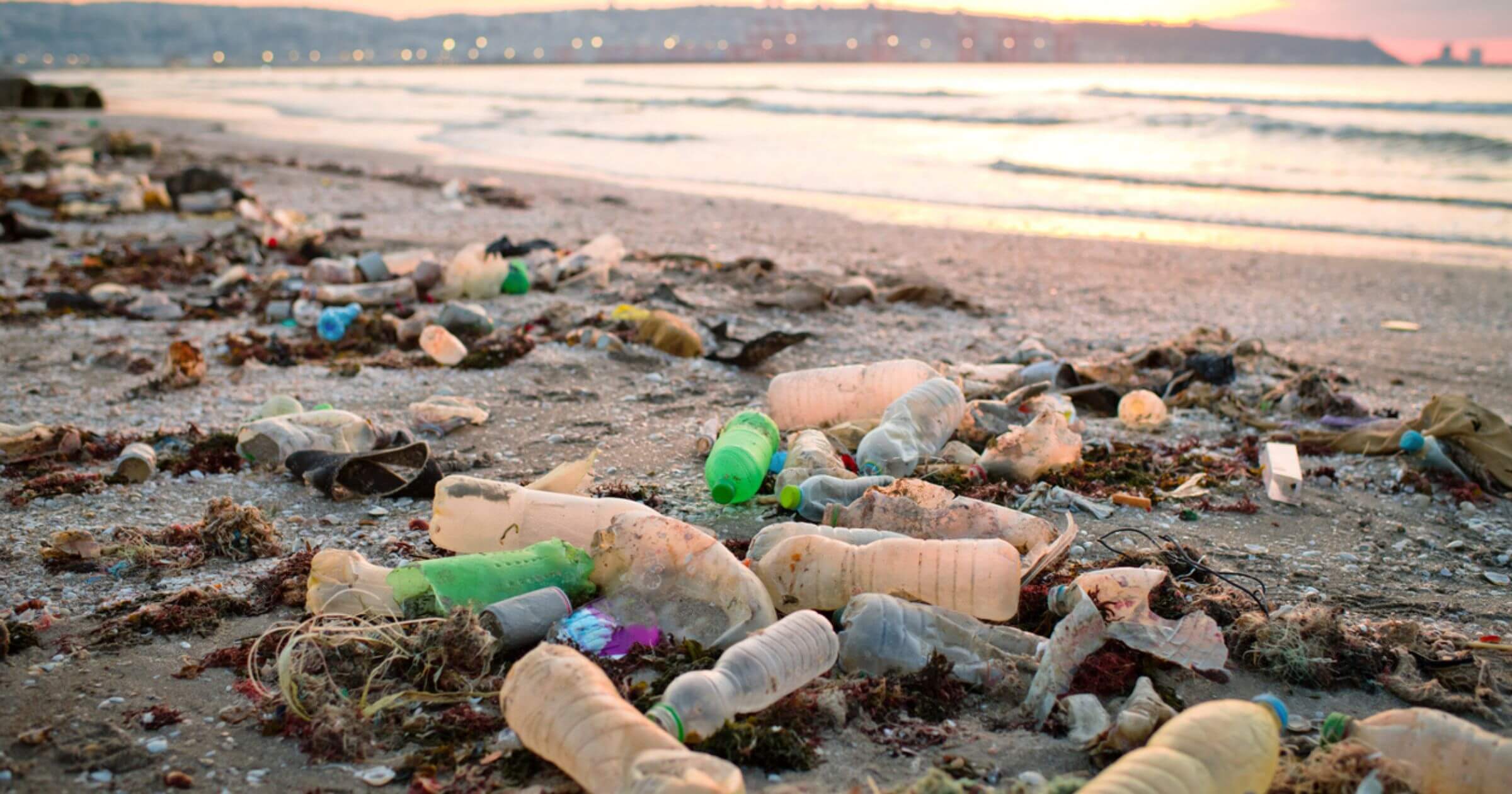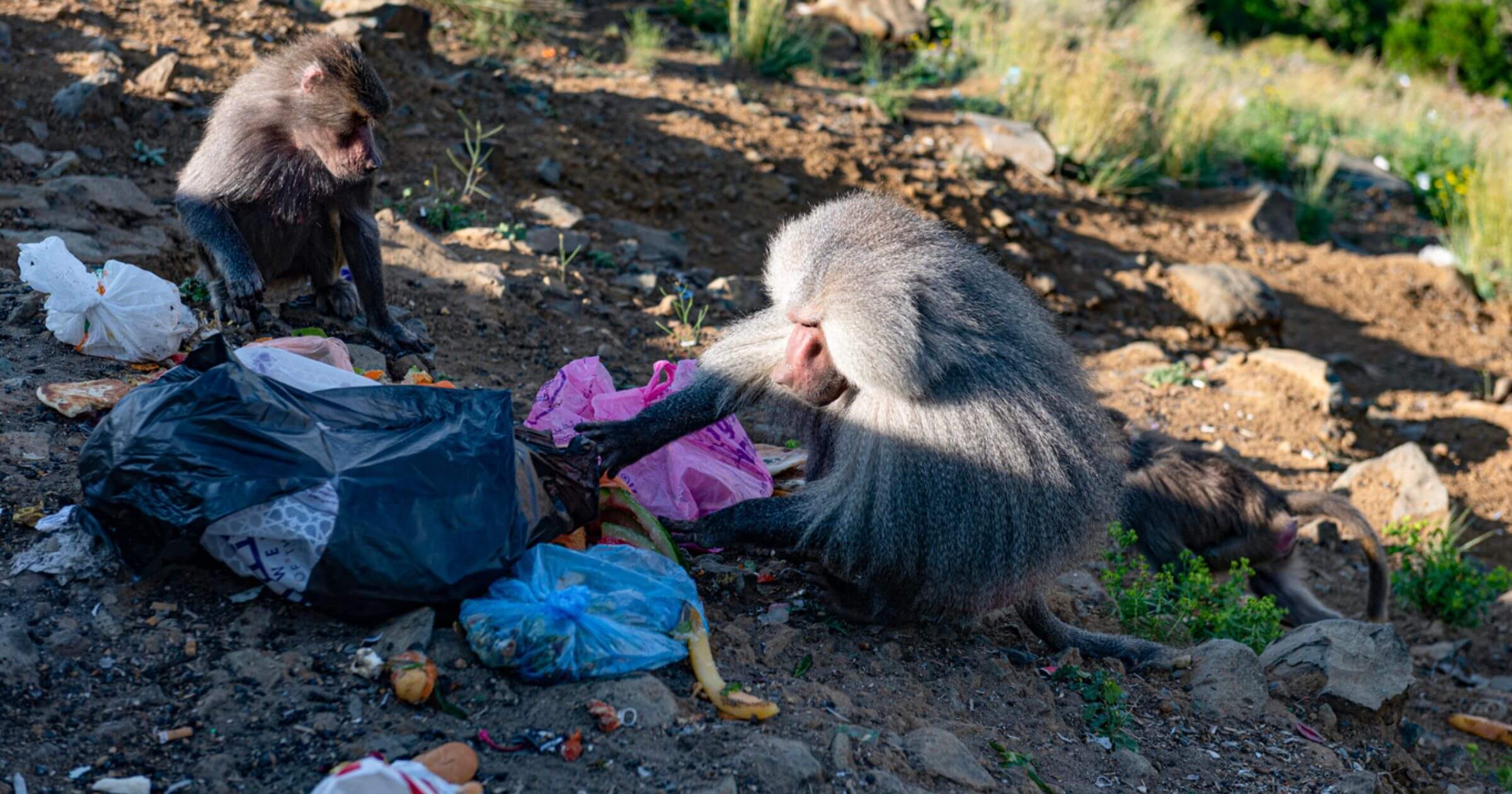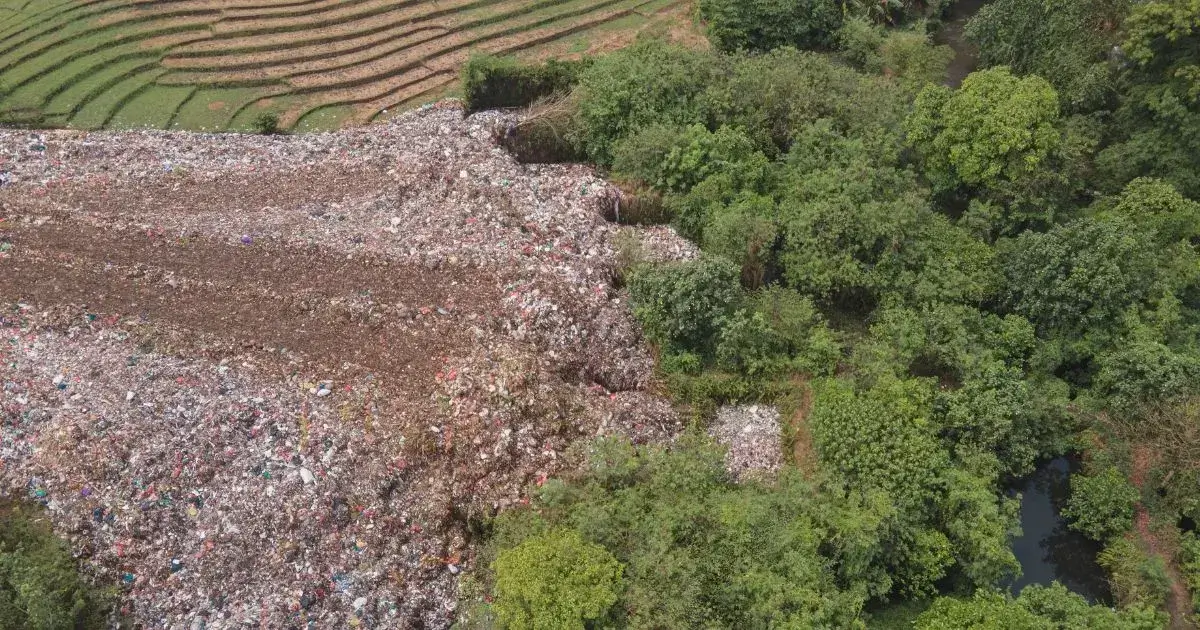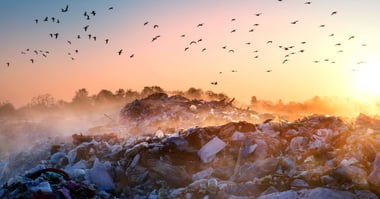
Tamara Davison
Tamara Davison is a journalist who specializes in sustainability and the environment. Reporting from around the world, she's seen firsthand the direct impact waste is having on coastal communities and our oceans. As a diver trained in ecological monitoring, the changes Tamara has seen in marine habitats inspired her to action. She's previously written for The Guardian, The Independent and the Evening Standard. She's also produced environmental documentaries for EuroNews.
Our planet faces one of its biggest challenges in 2024: plastic pollution. The material has undeniably transformed human life, making things convenient for sectors like medicine and retail. But our environment is paying the price.
Once celebrated, plastic's long-lasting and durable features are fueling Earth’s ecological crisis. The Ellen McArthur Foundation predicts that by 2050, our oceans will contain more plastic than fish. Researchers have also found plastic particles in every corner of the globe, from the peaks of Earth’s highest mountains to the bottom of our oceans.
Understanding all the details about plastic pollution is a crucial first step to tackling the crisis. So here are 21 facts you should know about plastic pollution.
Want to reduce your business’s plastic footprint? We can help. All you have to do is get in touch with our in-house team of experts. Once we’ve received your details, we can arrange a call to discuss how we can work together to reduce your impact on the planet.
What’s on this page?
01 | Plastic pollution facts: The key takeaways02 | Top plastic pollution facts you should know about
03 | Can we stop plastic pollution from getting worse?
04 | Summary
Plastic pollution facts: The key takeaways
It’s impossible to ignore the effect that plastic pollution is having on our planet. From impacting public health to putting our marine ecosystems at risk, there are no benefits to mounting plastic waste. Here are the key takeaways:
- The output of plastic production is twice as much as 20 years ago — Demand still outweighs the growing awareness about the harmful effects of plastic waste
- Around 85% of plastic waste ends up in landfills, even if some is considered recyclable — Most of this will end up in low-income countries with poor waste management systems
- Roughly 1 million marine creatures will die in the next ten years as a result of plastic pollution — This is putting endangered ocean species, such as hawksbill turtles, whale sharks, and sea otters, at particular risk of being wiped out
- Three-quarters of people who answered a Reuters 2022 survey want to stop the sale of single-use plastic altogether — Clearly, there’s a growing public demand for a solution
Top plastic pollution facts you should know about
We all know that plastic pollution is a significant issue. But do you know how it's impacting the environment?
1. Plastic has only existed for 116 years
According to the Science Museum, Leo Baekeland created the first fully synthetic plastic in 1907, kickstarting the ‘boom’ in affordable mass-produced products.
This is important because it highlights that the amount of plastic humans have generated in just over a century has become a global crisis. It also demonstrates how important it is for us to act now to counter the output in the next 100 years.
2. Humans create 400 million tons of plastic waste each year
The United Nations highlighted that, since the 1970s, the production of plastic and subsequent waste has skyrocketed to 400 million tons of plastic per year, which is alarming.
If we remain on the same trajectory, 1,100 million tons of plastic waste will be produced by humans each year by 2050.
3. Around half of the plastic manufactured is single-use
About 50% of the global output of plastic is single-use, with manufacturers often making them into plastic bags, drink bottles, and food containers. What’s more, most customers will only use these items for a few minutes before throwing them away.
Not only are some of these plastics notoriously tricky to recycle, but they’re some of the biggest polluters in our oceans and contribute to things like the Great Pacific Garbage Patch.

4. The average usage time of a plastic bag is just 12 minutes
Several sources report that a plastic bag's average ‘working life’ is around 12 minutes. Usually made from polyethylene, these bags take about 20 years to break down. This is one of the reasons why it's one of the biggest ocean pollutants.
This data shows the disproportionate relationship between single-use plastic and environmental impact, highlighting the importance of finding alternatives.
5. 20 businesses are responsible for generating 55% of the world’s plastic waste
In 2021, researchers shockingly discovered that 20 multinational corporations, oil and gas giants, and chemical companies were responsible for more than half of the world’s plastic waste.
We know this may feel disheartening, leaving you wondering what the point of recycling is if big businesses have such an impact.
But this knowledge is essential, as it calls for a different approach to plastic packaging. By knowing about the corporate influence on plastic waste, consumers can advocate accordingly — boycotting the world’s biggest polluters and pushing for sustainable reform.
6. Production of plastic doubled from 2000 to 2019 to 460 million tonnes
According to the OECD, the global output of plastic production in 2019 was 460 million tons. That’s double what it was less than 20 years earlier. In 2002, our world was creating around 200 million tons of plastic. Based on these findings, we can see that plastic has become increasingly commonplace in our modern world.
A reliance on plastic products partly fuels it, as it's a material we’re so used to seeing and using. Several decades ago, however, people were less reliant on such throwaway materials.
7. The US and UK generate the most amount of plastic pollution per person in the world
A 2020 academic journal claimed that each American generates 105 kilograms (kg) of plastic waste annually, while UK citizens contribute 99 kilograms per capita. By contrast, people in Japan generate 38 kg, and those in India contribute 20 kg annually.
This means the people in these two nations have the world's largest plastic waste footprints.
8. Plastic packaging accounts for 36% of plastic waste
The United Nations revealed that 36% of plastic produced is used in packaging, making it the most significant plastic sector. To make matters worse, over 85% of plastic packaging waste goes to landfills, gets incinerated, or ends up in our oceans.
9. Five household items make up most ocean waste
The top five plastic items that pollute our oceans are plastic bags, plastic bottles, plastic food containers, cutlery, and plastic wrappers. Alarmingly, it makes up 44% of all plastic waste floating in our oceans. Collectively, this is higher than other waste, such as fishing nets and industrial packaging.
10. 100,000 marine animals are killed by plastic waste each year
Considering the vast amount of plastic in our oceans, the impact on marine wildlife is sadly unsurprising. Numerous marine animals die from ingesting or becoming tangled in plastic, and entire ecosystems are threatened by plastic waste.
Turtles, in particular, are more at risk of ecological threats because they reproduce slowly. They eat jellyfish, but the animal often mistakes plastic bags for dinner. Coral reefs are also particularly impacted as these delicate ecosystems are susceptible to disease transported by pathogens on plastic waste. Reefs also require a careful mix of sunlight, the right temperature, and water quality — so if the sun is blocked by plastic, it can kill the coral.
11. At least 1,557 animal species have eaten plastic
It’s not just marine wildlife that is at risk from plastic pollution. Researchers have discovered plastic contamination in thousands of animal species worldwide, implying that they ingested plastic through food or water supplies.
In most instances, this is deadly for the animal and can harm the food chain — which is why plastic is now found in humans.

12. Plastic toothbrushes take 500 years to biodegrade
While you may use a plastic toothbrush for a matter of months, it will be around long after you. Given that the US throws away 1 billion toothbrushes each year, you can see the scope of this problem.
Want to know how to make your bathroom habits kinder to the planet? Read our guide on reducing plastic waste at home.
13. We only recycle 9% of plastic waste globally
There are many reasons why so little plastic waste gets recycled. In some cases, the types of plastic used are challenging to re-process, while in other instances, it is mismanaged.
Many companies are also producing packaging with multiple materials — such as aluminum toothpaste tubes with a plastic outer layer — which makes it extremely difficult for recycling facilities to separate and sort.
On top of this, plastic in the ocean is further damaged by UV rays and salt, making it brittle and almost impossible to recycle.
14. A truckload of plastic enters the ocean every 60 seconds
The World Economic Forum found that 32% of plastic produced each year is left to flow into our oceans.
Even if your trash is sent to a landfill, rainy seasons fuelled by climate change may wash some of this into the sea. This is due to poor waste management systems, infrastructure, education, and costs.
15. 14 million tons of microplastics sit on the sea floor
Australia's National Science Agency released the first estimate of microplastic sitting on ocean beds three years ago. Experts concluded it was more than double the amount of plastic floating on the ocean’s surface.
Microplastics' impact on our water harms marine animals, which easily ingest the particles. The chemicals tied to these microplastics can also contaminate water supplies. Many countries now rely on de-salination to create drinking water; however, reverse osmosis doesn’t entirely remove PFAS chemicals.
Find out which products to ditch to avoid microplastics in our new comprehensive guide.
16. The average person consumes 20 kg of plastic in their lifetime
Humans unknowingly consume many synthetic materials due to food and drink packaging microplastics. Growing research reveals this is seriously dangerous to human health, with the medical community linking it to cancer.
The alarming realities of plastic impacting human health are difficult to ignore. A recent study even detected microplastics at both ends of a human placenta, meaning both the mom and baby were being impacted.
17. Up to one million people die each year from illnesses and diseases linked to plastic waste pollution
Plastic pollution contributes to hundreds of thousands of deaths worldwide — mainly in developing countries that receive trash from Western countries and have poor national waste management systems.
Burning waste significantly contributes to these death rates, as it releases harmful chemicals inhaled by the local population. The detrimental effects of plastic pollution on human health can take years to become apparent.
18. The US exports 74,000 shipping containers of plastic waste to low-income countries
Countries like the US, the UK, and many European nations still export tons of plastic to developing countries. This statistic from 2021 reveals that the US has a long way to go when it comes to waste management.
Out of sight and out of mind, many of us hope that this waste gets recycled accordingly. However, organizations like Greenpeace have found that waste destined for recycling is sometimes dumped and burned in low-income countries.
19. The US burns more waste than it recycles
In 2019, researchers found that the US still incinerates much of its recyclable plastic. The argument is that recycling isn’t economically beneficial, and recycling bodies don’t accept some types of plastic touted as recyclable.
20. 90% of people want a global plastics treaty to end pollution
Although the plastic pollution crisis looks pretty dire, the situation isn’t entirely hopeless. The majority of people want to clean up the environment and put an end to unsustainable waste practices.
In 2021, a poll by the Institut Public de Sondage d'Opinion Secteur (IPSOS) of 20,000 people from over 28 countries revealed overwhelming support for a global plastic treaty to address pollution.
21. CleanHub has collected over 7 million kg of plastic waste
Some organizations are deeply committed to changing the plastic waste narrative — and we’re one of them.
CleanHub has partnered with over 250 brands, helping each address its environmental footprint, reduce plastic pollution, and support coastal communities in cleaning up ocean waste. What’s great is that we’re just getting started.
Can we stop plastic pollution from getting worse?
If your bath is overflowing, you don’t scoop out water — you turn off the tap. You can say the same about the plastic crisis. We can only stop things from worsening by halting the production and demand for more plastic.
Individual consumers, businesses, and authorities all have a role in enforcing this. A collective approach needs to address sustainable alternative materials to plastic and embrace a complete shift to the status quo we’ve all been so used to in the last few decades.
Summary
These statistics tell us there’s no better time than the present to start taking action. The environment, our wildlife, and even human health depend on our decisions regarding plastic pollution in the coming years.
You can have an impact by supporting brands committed to acting on plastic pollution. At CleanHub, we connect you with these businesses so you can be confident that you’re supporting a more sustainable future. You can take your impact further by supporting our global plastic collection efforts. You play a crucial role in creating a cleaner planet by joining forces with us.
Want to reduce your business’s plastic footprint? We can help. All you have to do is get in touch with our in-house team of experts. Once we’ve received your details, we can arrange a call to discuss which plastic credits plan will suit your business needs best.


%20(1).webp?width=380&name=Pile-of-plastic%20(1)%20(1).webp)
.webp?width=380&name=Paper-packaging%20(1).webp)
.webp?width=380&name=Cosmetics%20(1).webp)
.webp?width=380&name=Plastic-pollution-surface-of-water%20(1).webp)
.webp?width=380&name=solar-collection%20(1).webp)
%20(1).webp?width=380&name=Plastic-on-the-beach%20(2)%20(1).webp)
.webp?width=380&name=recycling%20(1).webp)

.webp?width=380&name=Colourful%20corals%20(1).webp)
.webp?width=380&name=trash%20(1).webp)
